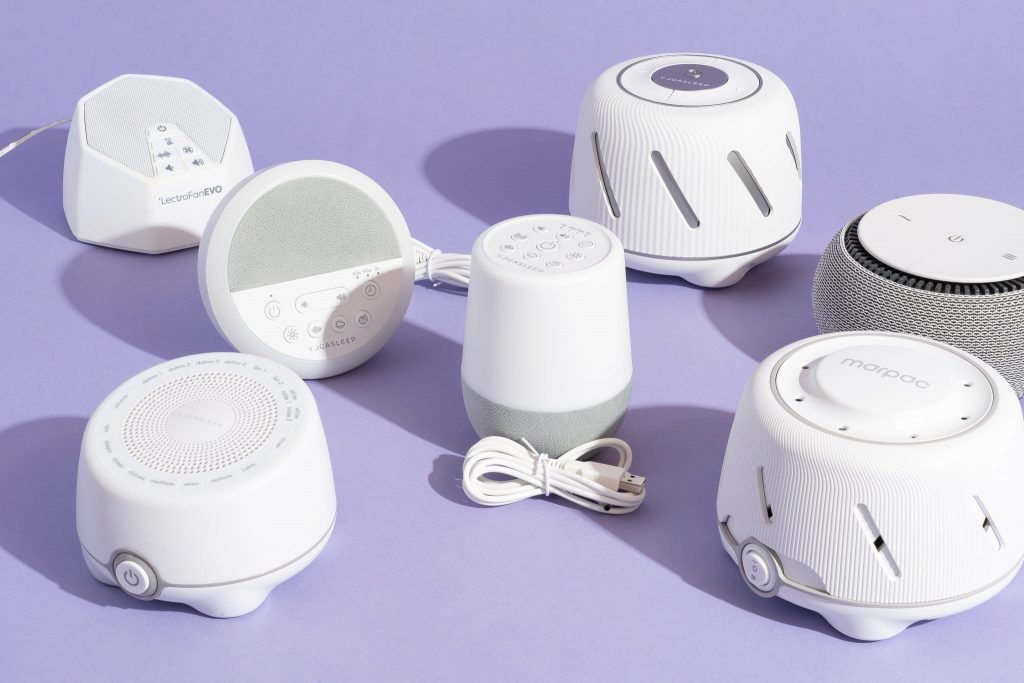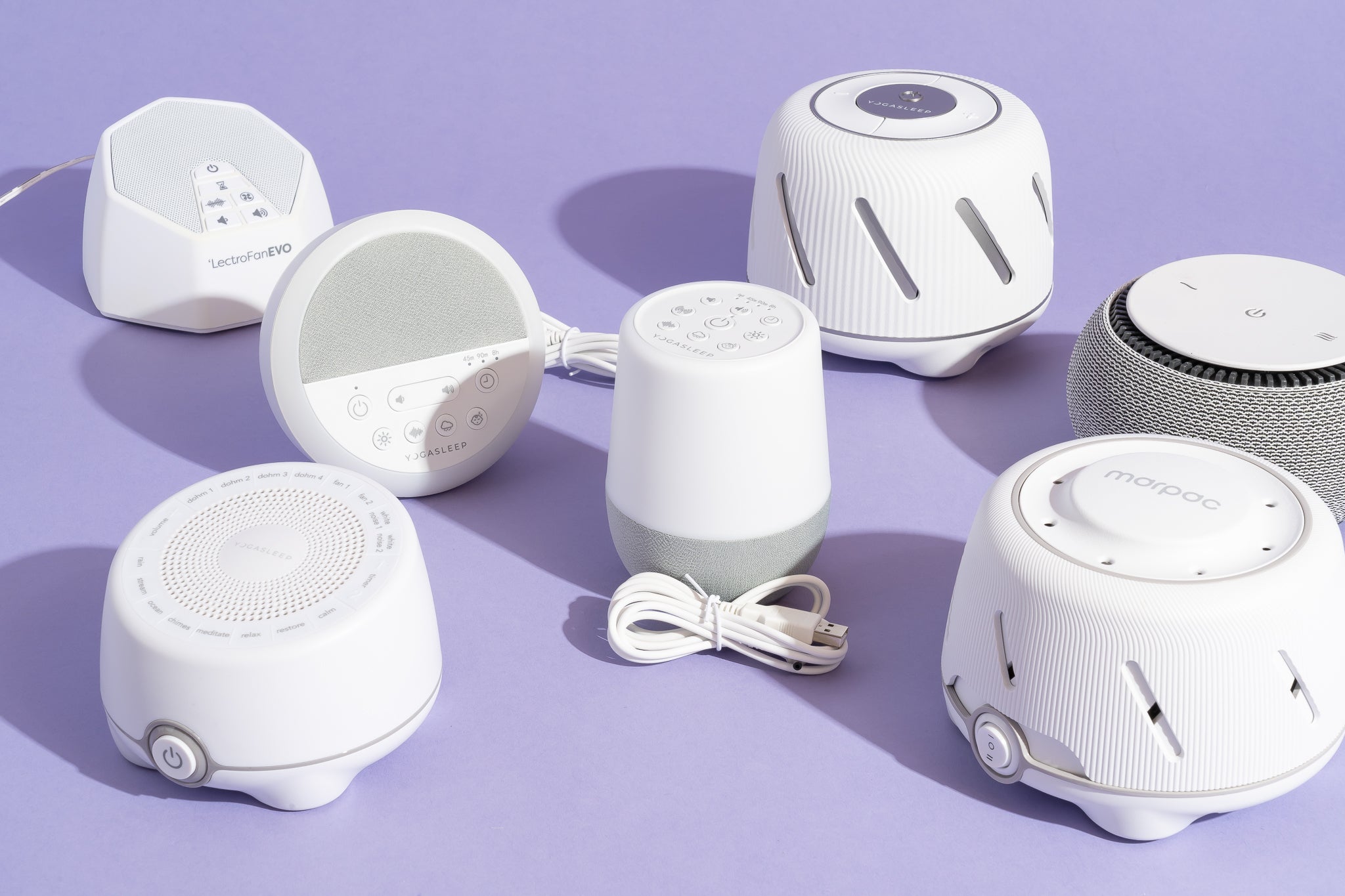In the womb, the babies hear noise all the time. They hear the mom’s heartbeat, her talks, the blood flow, etc.
Because babies are used to hearing a noise all the time, they may need to hear it when they get out of the womb, too. Noises of low frequencies make them feel safe and calm, knowing someone is here by their side.
Most parents use white noise machines to help babies fall asleep faster, but not all of them know how loud should white noise be for baby to fall asleep peacefully.
If you are one of those parents who want to know how to place the baby to sleep using a white noise machine, keep reading below.

How Loud Should White Noise Be for Baby
Some researchers state that the white noise should be 50 decibels, but in fact, 50 decibels is too quiet, and the baby won’t help. The most accurate white noise intensity ranges from 60 to 70 decibels. Even a study has shown that babies can fall asleep with a white noise of over 70 dB since the white noise in the womb can reach from 85 dB to 95 dB in some cases.
The white noise is best when your baby does not want to sleep even after long cuddles, lullabies, warm baths, etc. When nothing seems to help, a white noise machine or a hairdryer will. Most babies are used to listening to noises since the womb produces noises, too.
White noises that are too loud may irritate the baby and make them upset even more, while a too-quiet white noise would not help either. So, you should find the golden middle and choose the right white noise level, which is between 60 dB and 70 dB.
60 dB to 70 dB of white noise is a safe volume for the baby. It can activate the baby’s calming reflex, which is an inborn reflex for sleep.
But, if a baby is upset, you can increase the volume of the white noise machine to up to 100 dB. Listening to a louder white noise is more calming for the baby than listening to their own crying.
When is the best time to use white noise?
The best time to use white noise is during the sleepytime routine of your baby and when they’re upset. Babies easily get calm when they hear a lot of noise or feel something strange. On the other hand, every new event or feeling may upset the baby since it is not adapted to the external world.
The different purpose requires different white noise levels. When a baby is upset, you can turn the white noise louder so that it would cover the baby’s crying. When preparing for sleep, the white noise should be lower than when the baby is upset. While during sleep, it should be at a low frequency and not disrupt the baby’s sleep.
Read more: How to Get Baby to Nap Longer

Where should you place the white noise machine?
It is important to place the white noise machine at the right distance from the baby. If the device is too close to the baby’s ears, it can damage their hearing even if turned on at a lower level.
The distance is often written on the white noise machine manual, and it is generally around 7 feet. So, it is best to palace the device at least 7 feet away from the crib to ensure it would not hurt the baby’s hearing.
In my case, I placed the white noise machine on the dresser, which was something more than 7 feet away. However, I used the noise measurer app NIOSH Sound Level Meter to ensure that the noise was at the right level. This app has a high success rate and accuracy of ± 2 dBA.
So, it is not important just to know how loud should white noise be for baby, but what is the right distance to put the white noise machine in the room.
Is white noise bad for babies?
If you play the white noise at high volume and for a long period, it might be dangerous for the baby’s hearing. For example, playing the white noise device at 85 dB for around 8 hours might cross the safety standards and be bad for the baby.
Some pediatricians recommend putting the white noise device as far as possible from the crib and turning it off once the baby falls asleep. Anyway, in my case, I left the device on even during the baby’s sleep.
The white noise may make the babies reliant on it. Some babies feel difficulty falling asleep without the white noise device, for example, when traveling or being in another environment.
Alternatives to the white noise machine
Closest to white noise is your hairdryer and vacuum cleaner. You can also use any other noisy device different from these two. You might find it helpful to play white noise videos on YouTube as well, but remember to adjust the noise level.
So, you might have noticed that your baby does not wake up when you vacuum your home, right? It was the case with my baby, too. It is so relieving knowing that you can finish some daily tasks and clean up the home without waking up the baby.
In situations when I forgot to take the white noise device with me, I used the hairdryer to help my baby fall asleep. And it worked all the time!
Also read: How to Get a Baby to Sleep in a Bassinet
Conclusion
The white noise machine is beneficial for your baby and for you, too. If you want everyone to sleep well and peacefully, you must buy one.
Following the safety measures should be a priority since white noise can be as bad as it is good for the baby. Place the machine at the recommended distance and measure the volume it plays to ensure it would not hurt your baby’s hearing.
I am happy if this short article has answered all your questions related to the white noise machine and its safe volume levels.








